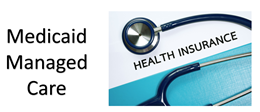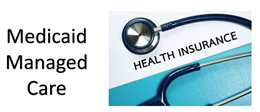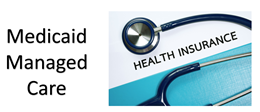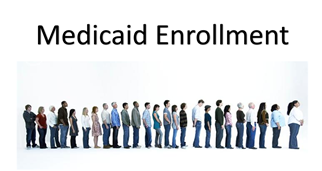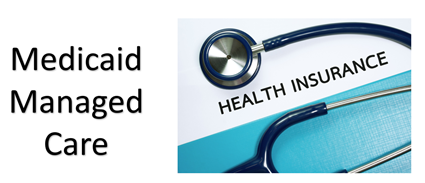MM Curator summary
TN received approval for its first-of-its-kind innovation waiver to share savings it creates in its Medicaid program with CMS.
The article below has been highlighted and summarized by our research team. It is provided here for member convenience as part of our Curator service.
Seema Verma, chief administrator of the Centers for Medicare & Medicaid Services, says the changes in the way Medicaid is funded and regulated in Tennessee “could be a national model moving forward.”
With less than a dozen days left in power, the Trump administration on Friday approved a radically different Medicaid financing system in Tennessee. With this move, the federal government is for the first time granting a state broader authority in the operation of its health insurance program for the poor without interference from Washington, allowing Tennessee to make decisions on such issues as whether to add new benefits or eligibility categories or spend Medicaid dollars outside of health care, if it thinks that would help enrollees.
Instead of the open-ended federal contribution to the funding of Medicaid in all other states — which increases with higher enrollment and associated health costs — Tennessee will instead get a capped amount of money, via an annual block grant.
The annual funding cap will increase if enrollment grows. What’s different is that, unlike with other states, Medicaid funding to Tennessee won’t automatically keep up with rising expenses.
The approval is a 10-year “experiment,” according to Friday’s announcement by Seema Verma, administrator of the federal Centers for Medicare and Medicaid Services. The approach has been pushed for decades by conservatives who say states too often chafe under strict federal guidelines about enrollment and coverage. They think they can find ways to provide care more efficiently, she says.
But Michele Johnson, executive director of the Tennessee Justice Center sees the move as a step backward for the state’s Medicaid program.
“No other state has sought a block grant, and for good reason,” Johnson says. “It gives state officials a blank check and creates financial incentives to cut health care to vulnerable families.”
Tennessee is one of 12 states that have not approved expanding Medicaid under the Affordable Care Act – a decision that’s left tens of thousands of working adults in Tennessee without health insurance.
Whether this change in the way Tennessee’s Medicaid program is funded will stick is an open question. The incoming Biden administration is likely to oppose the move, but to unravel it, officials would need to set up a review that includes a public hearing.
Implementing such a fundamental change via an executive branch action rather than getting Congress to amend Medicaid law is also likely to be met with court challenges.
In any event, the changes to the state’s program will take months to implement because the shift in policy requires final approval by the legislature, and officials in Tennessee must also negotiate quality of care targets with the administration.
TennCare, the state’s Medicaid program, says the new system would give it unprecedented flexibility to decide who is covered and what services it will pay for.
Under the agreement, TennCare will have a specified annual spending cap, to be based on historical spending, inflation and predicted future enrollment changes. If the state can operate the program at a lower cost than the cap and maintain or improve quality, the state then shares in the savings.
Trump administration officials say the approach adds incentive for the state to save money, unlike the current system, in which increased state spending is matched with more federal dollars. If Medicaid enrollment grows, the state can secure additional federal funding. If enrollment drops, it will get less money.
“This groundbreaking waiver puts guardrails in place to ensure appropriate oversight and protections for beneficiaries, while also creating incentives for states to manage costs — while holding them accountable for improving access, quality and health outcomes,” Verma said. “It’s no exaggeration to say that this carefully crafted demonstration could be a national model moving forward.”
The agreement is somewhat
different from traditional block grants championed by conservatives, the CMS notes, since it allows Tennessee to get more federal funding as enrollment grows. And while the state is given flexibility to increase benefits, it can’t on its own cut benefits.
However, opponents — including most advocates for low-income Americans — say the approach will threaten care for the 1.4 million people in TennCare — a group that includes children, pregnant women and the disabled. Federal funding covers two-thirds of the cost of the program.
Democrats have fought back against block grant Medicaid proposals since the Reagan administration and most recently in 2018 as part of Republicans’ failed effort to repeal and replace major parts of the Affordable Care Act. Even some key Republicans opposed the idea because it would cut billions in funding to states, and that would make it harder to help the poor.
The approval of Tennessee’s request comes as Medicaid enrollment is at its highest-ever level.
More than 76 million Americans are covered by the state-federal health program — a million more than when the Trump administration took charge in 2017. Enrollment has jumped by more than 5 million in the past year as the economy slumped with the pandemic.
Medicaid, part of President Lyndon B. Johnson’s “Great Society” initiative of the 1960s, is an entitlement program in which the government pays each state a certain percentage of the cost of care for anyone eligible for the health coverage. As a result, the more money states spend on Medicaid, the more they get from Washington.
The newly approved demonstration project in Tennessee calls for CMS to work with the state to set spending targets that will increase at a fixed amount each year.
The plan also includes a “safety valve” to increase federal funding in the case of unexpected increases in enrollment.
“The safety valve will maintain Tennessee’s commitment to enroll all eligible Tennesseans with no reduction in today’s benefits for beneficiaries,” according to a CMS written statement.
Tennessee has committed to maintaining coverage for eligible beneficiaries and existing services while staying under the spending targets.
In exchange for taking on this financing approach, the state will receive a range of operating flexibilities from the federal government, as well as up to 55% of the savings generated on an annual basis when spending falls below the aggregate spending cap and the state meets certain quality targets, yet to be determined.
The state can spend that money on various health programs for residents, plus areas that Medicaid funding typically doesn’t cover, such as improving transportation and education and employment for enrollees.
Ten years is an unusually long time for a federally granted waiver of its rules, but the Trump administration has approved other long-term experiments in recent years to give states more flexibility.
“The block grant is just another example of putting politics ahead of health care during this pandemic,” says Johnson of the Tennessee Justice Center. “Now is absolutely not the time to waste our energy and resources limiting who can access health care.”
State officials in Tennessee applauded the approval.
“It’s a legacy accomplishment,” says Gov. Bill Lee, a Republican. “This new flexibility means we can work toward improving maternal health coverage and clearing the waiting list for developmentally disabled.”
“This means we will be able to make additional investments in TennCare without reduction in services and provider cuts.”
Kaiser Health News is a nonprofit, editorially independent program of the Kaiser Family Foundation, and is not affiliated with Kaiser Permanente. KHN chief Washington correspondent Julie Rovner contributed to this report.
Clipped from: https://www.npr.org/sections/health-shots/2021/01/09/954985151/trump-officials-approve-tennessees-controversial-request-to-revamp-medicaid-fund





